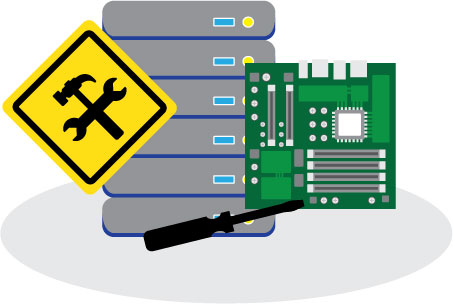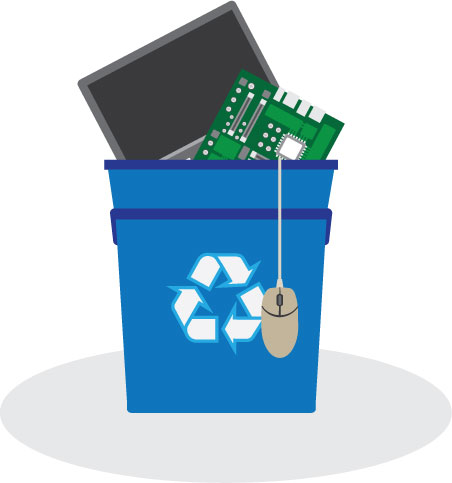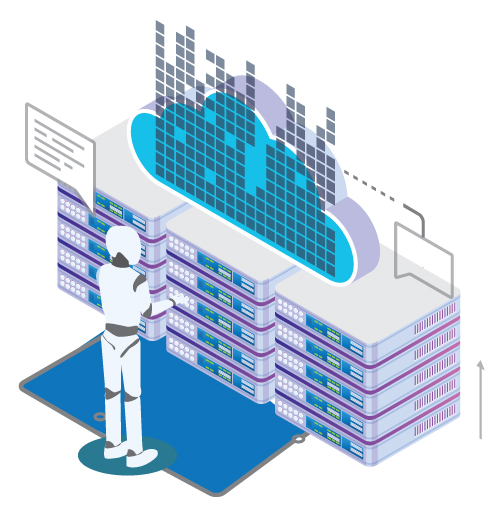
A survey from Deloitte shows that 70% of the average IT budget is spent on maintenance alone. Competitive companies can’t afford to spend that much on maintenance anymore, and it’s about to be the end of the decade – which means it’s time to update the things that are holding you back. What are some best practices when it comes to reducing IT maintenance costs?
Consolidate Obsolete Hardware
The end of 2019 gives rise to an important deadline, namely the End-of-Life date for your Windows Server 2008 devices. Getting rid of this physical infrastructure gives you an excuse to consolidate other obsolete equipment as well. For example, your Windows 7 PCs and laptops are also going obsolete – time to upgrade them or buy new hardware. Even if you think that your equipment is currently top-of-the-line, it’s worth checking to make sure. There’s the equipment that your official audits reveal, but your developers may also have test machines hidden under desks or in closets. You never know when the heart of an apparently modern application might be running on something terrifyingly inappropriate.
As a rule, businesses spend a combined $1.8 billion in terms of lost productivity every year due to slow and broken-down machines. Replacing your obsolete equipment means both your users and your customers will benefit from more responsive applications, whereas your team will benefit from not having to spend as much time and money fixing and upgrading machines from the last hardware cycle.

Prepare for the End of On-Premise Infrastructure
If you’re going to consolidate your IT hardware anyway, it might be worth looking even further into the future. According to research from Gartner, companies that maintain in-house data centers are very unlikely to keep them for much longer – 80% of enterprise data centers will dissipate by the year 2025. This doesn’t mean that you should cancel your hardware refresh, dump all your servers, and start migrating to the cloud tomorrow. What it does mean is that you should start understanding which workloads in your organization absolutely cannot be moved offsite. You can then start understanding how the rest of your workloads will eventually migrate.
This is going to cut down maintenance costs in both the short term and in the long term. Over the next few months, you may discover some quick wins – services that are on-premises right now but can be easily and quickly replaced with SaaS applications for a lower TCO. In the fullness of time, many of the maintenance functions you perform now will instead be handed over to vendors, leaving you to concentrate on mission-critical tasks.

Start Automating Your Error Handling
A great way to save on maintenance is to have a computer do it for you. If you’re using containers, then container orchestration platforms have built-in error handling routines that can automatically kill and restart malfunctioning pods. If you want to take it to the next level, it’s possible to construct an entire AIOps platform focused around automated error-handling routines. When you instrument your applications and feed time-series data to analytics platforms, then can turn around and use this data to understand whether your applications are behaving normally or experiencing an anomaly.
If an application is experiencing an anomaly, you can use workflows that can either escalate an issue to a senior engineer, generate a support ticket, or try to handle a problem without human intervention. Right now, this typically means rebooting the application or other simple tasks, but AIOps is advancing all the time. Building a foundation for AIOps now will give you the ability to handle even more elaborate maintenance routines in the future.
Start Automating and Consolidating with Device42
Consolidating your IT hardware, planning to dissolve your data center, and automating your error handling procedures might take some time – or you could employ Device42. Device42 helps instantaneously catalogue your IT infrastructure. On the hardware side, it grabs version and serial numbers for everything attached to your network, even equipment that might be off the books – think of it as an instant audit.
On the application side, Device42 does much the same thing, finding out which applications you’re running and helping you find any obsolete software. It also maps application dependencies, allowing you to understand how to reboot applications that have failed, as well as which applications you should prioritize for cloud migration. Lastly, it even helps you find applications in the cloud, in VMs, and in containers.
The next decade of IT might see enterprises working with dramatically fewer amounts of physical infrastructure. By working with Device42, you can help prepare for that future proactively and thrive during the changes to come. Sign up for a demo today and learn more!



